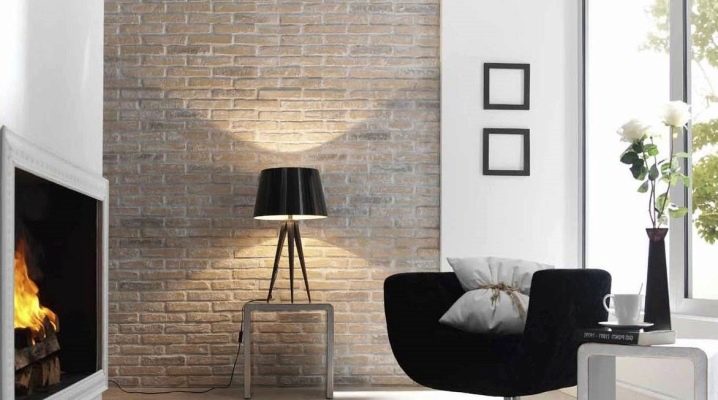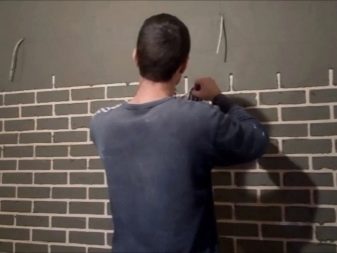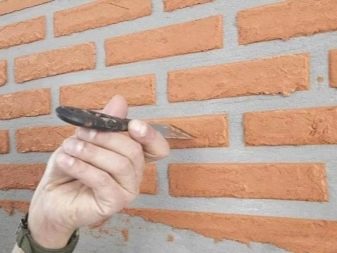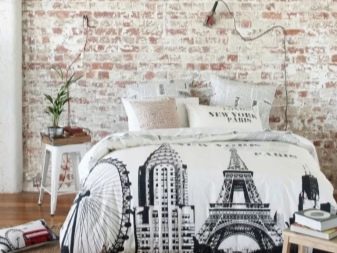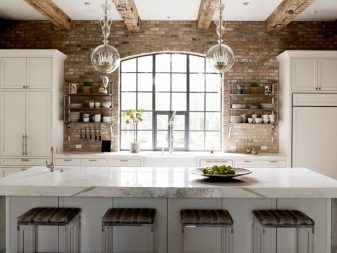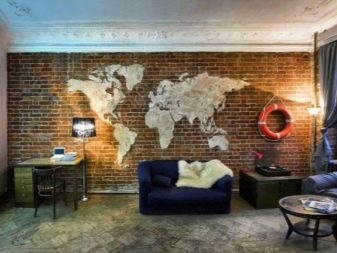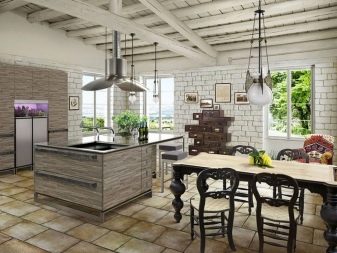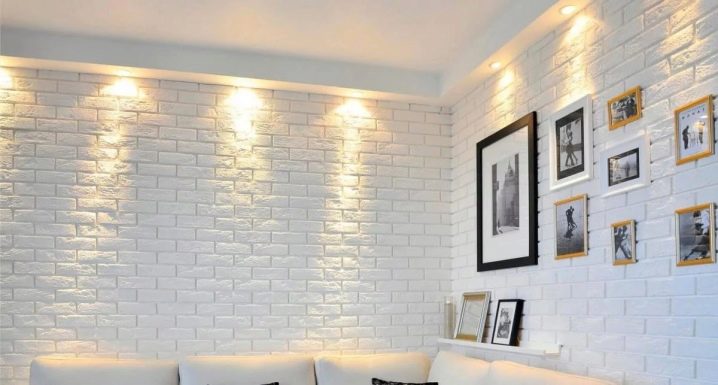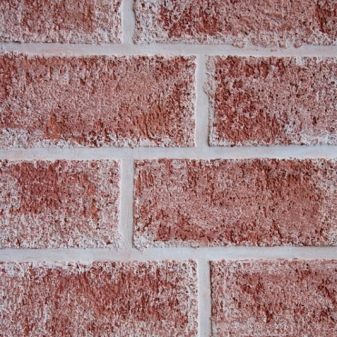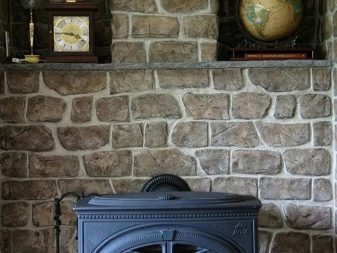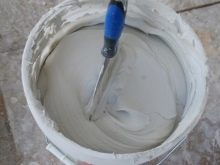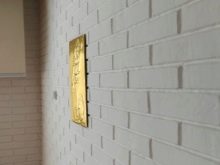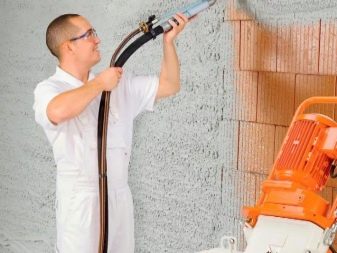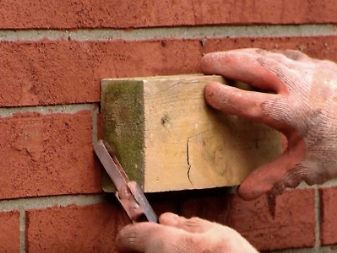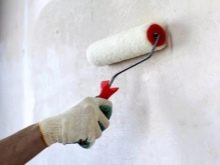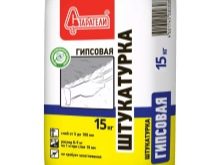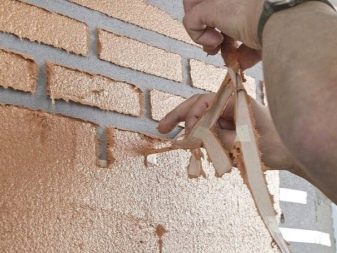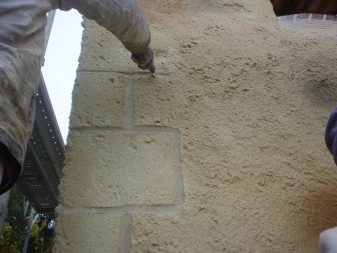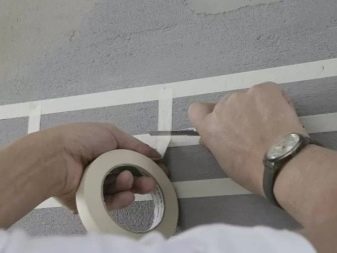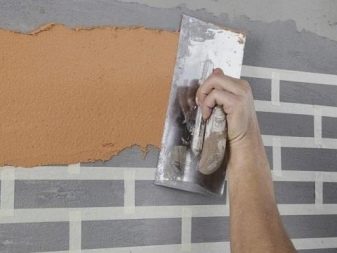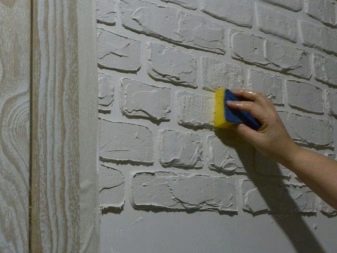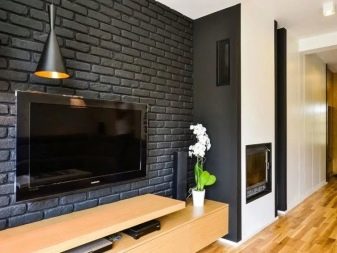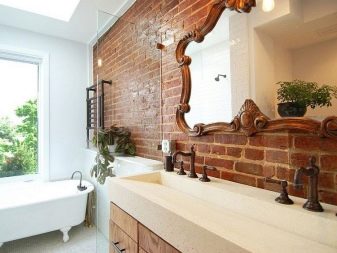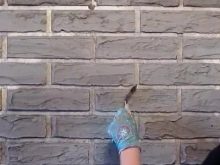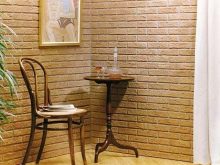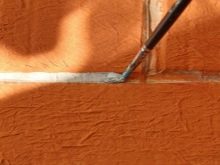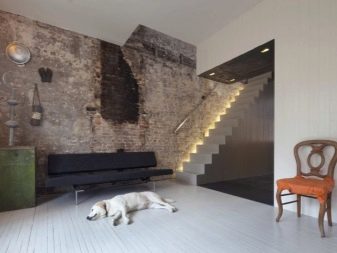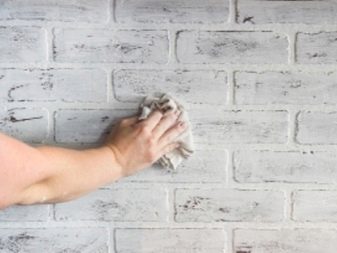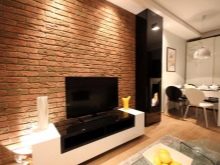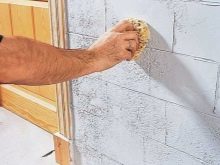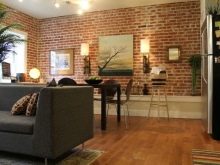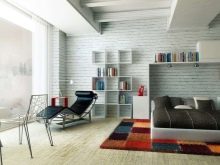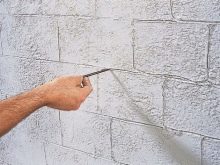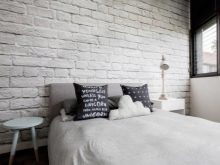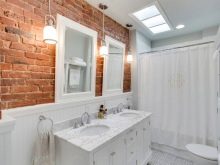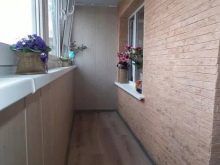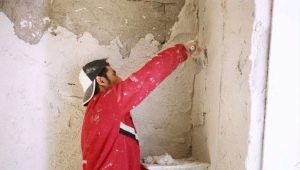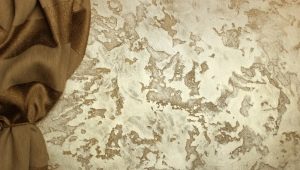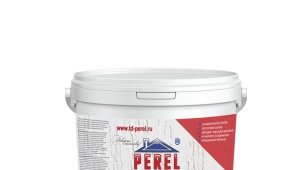How to make a spectacular "brick" wall of plaster?
At all times, people have sought to make their home beautiful. A variety of finishing materials, unusual furniture, original design of ceilings and much more allows you to give any room style and originality. But quite often there is a situation when with a minimum of funds I want to get the most effective result. This option refers to the finishing of the walls with plaster under the brick.
Special features
The brick wall fits well in almost any interior, as it is one of the oldest building materials. Whitewashed, these walls are perfectly combined with the styles of Provence, shebbi-chic. Red and brown bricks are an integral part of the loft style, and gray and beige will be a wonderful complement to the modern urban design of kitchens, bedrooms and halls.
It is the design of the room with the help of bricks and its imitations that bring together different interior styles., as it is perfectly combined with modern metal interior details, and with antique woodwork.
Finishing "under a brick" in the house is always the bright, fresh decision attracting views. And even if there is no brick wall in the house, it will not be difficult to create it yourself with the help of plaster finishes.
Materials
Plaster differs from other finishing materials by durability and excellent external data, a variety of textures, "naturalness" and excellent heat and sound insulating qualities. In addition, it is easy to clean and allows you to further update the surface using staining.
There are many types of plaster. Thus, the mineral plaster of a special texture will make the wall rough. It, by the way, can be used for outdoor work, as well as on balconies and loggias. Venetian plaster is very popular lately, but it is not used to imitate brickwork - it is an expensive material that includes marble flour.
Plaster is sold in hardware stores in a dry form. The basis of any plaster - binding materials, and the role of the filler can play sand, stone powder, fiber additives, thickeners and paint. The most beautiful imitation of brickwork is obtained from gypsum plaster and graffito plaster, which is distinguished by a great decorative effect. In addition to the decoration of the walls, with the help of "graffiti" make out fireplaces, doorways, walls on the open loggia of a country house and so on.
If you are preparing a plaster from a dry mixture, then its consistency should resemble thick sour cream, and you should not prepare too much mixture, because otherwise the solution will grab and it will no longer be applied.
For the convenience of transferring the pattern on the plaster, you can make a model of the end face of a brick. Perfectly suitable for these purposes thick cardboard or linoleum. On the brick, you need to mark the seams by indenting along the entire perimeter of the workpiece (from the front), and also mark another central seam - in the middle. The brick model is used when applying the pattern of masonry on the wall and further sizing of the picture with adhesive tape.It is best to start marking up from the top corner of the wall, simply by drawing a pencil around the model.
Attention! If you have to plaster large spaces (trading hall or cafe room), then you should think about saving materials.
This will help plastering machine. Mix for mechanical plastering cheaper than standard options. In addition, work with the use of modern equipment will save time and material to spend less by 20–25%.
Application technology
Before you start work on the design of the walls with plaster "under the brick", the surface must first be leveled with a primer, get rid of all the curvatures and differences of more than two centimeters. It is necessary to make it necessary, because the plaster mixture will lay down a layer of no more than 2 cm, and serious curvatures will be noticeable. It is important to remember that for the walls of concrete or wood need a different primer. After the preparatory work is completed, it is better to wait 2-3 days for the applied composition to dry completely. After that you can begin to plaster.
Gypsum plaster is best for painting bricks. It differs in ease of application, lack of "shrinkage" (does not change after drying) and environmental friendliness. The mixture is applied in a layer of about 1–2 cm, while the total consumption of plaster will be 8–10 kg per square meter. m. You should not mix plaster plaster with any other substances, such as cement glue. This can lead to cracks and even delamination of the plaster.
Imitation of brickwork using a plaster layer can be performed in two ways: put stitches with a scraper or use masking tape for this purpose. For application of seams with a scraper, spatulas, wide and narrow, will be needed. The wide one is used for applying and leveling the plaster mix, and the narrow one is needed for correcting corners and small cavities. It will take a scraper, but its role can be performed by a regular chisel or steel plate, as well as a rule of 1.5 to 1.8 m long and the jointing used in stone works.
Plaster mixture is applied with a wide spatula, then leveled. The stitches are laid out after the mortar has dried, but it has not yet seized completely. For marking to the wall you need to attach a rule and draw the seams.Width can vary from 5 to 10 mm, we recommend that you avoid too wide and deep joints with this method of application.
In the marking it is better to focus on the size of a standard brick and use a previously prepared model of cardboard or linoleum.
After the seams are drawn, you can proceed to study them, that is, the direct application of the picture. You need to start with a long horizontal seams, holding under them with a scraper and removing the "extra", and then proceed to short vertical. The recommended depth of the seams is 3-5 mm, and they can be given a beautiful shape by working with a jointing.
Masking tape - a popular means for the image of seams, although this method is more laborious than the first. Initially, the walls are primed, and then future seams are painted on top (you can use an ordinary pencil). The masking tape is applied along the lines, and its ends must extend beyond the limits of the wall section being processed. Scotch tape must be overlapped.
Further, all the wall space is covered with plaster with seams and adhesive tape, and leveled. You can use a spatula, but you can also apply the plaster with your hands, it will turn out even more natural.Only do this preferably in latex gloves. It is necessary, without waiting for the plaster to dry, to pull over the ends of the adhesive tape and remove it along with part of the plaster. If the tape is still broken, you can use any sharp object to release its tip.
The main problem is that masking tape is not always carefully separated from the plastered surface. It can be removed from a larger than necessary part of the solution or break. Tightening the work is not worth it, as a quick drying of the gypsum plaster will not allow you to carefully remove the adhesive tape. The edges of the bricks after removing the paint material must be further processed with a spatula and jointing. For those who work with tape seems too complicated, there is the option of using ready-made stencils. They are sold in large building supermarkets.
Useful tips
Imitation brickwork can be very different. Two common options are gypsum tile imitating brickwork and a pattern on wet plaster. If everything is clear with the first option, since it is very difficult to spoil a wall laid out with tiles “under the brick”, then the second option raises many questions.Choosing this technique, you need to understand how to apply a picture carefully and which image is as simple as possible in execution. You do not need to be afraid of these finishing works - they are simple, they will not take much time and even allow you to save it.
A lesson in drawing brickwork on plaster will bring joy and pleasure not only in the process, but also after the completion of the work, if:
- the seam lines will be slightly curved: an ideally flat brick wall is extremely rare, so small errors in the outlines will create the illusion of real brickwork;
- paint the wall in a natural color (beige, milky white), and make the seams darker.
- experiment with texture and roughen the bricks, as well as further develop the edges, making them more visible, prominent;
- imitation brick will be processed "antique" or painted accordingly;
- bricks will be of different size or length, with natural grooves or chips;
- make the edges smoother — a regular wet sponge will help, and the remnants of the solution on the edges can be removed with a dry cloth.
Coloring will also help to give beauty and neatness, and you can use both a brush and a spray gun to apply paint.
Beautiful examples in the interior
- Imitation brickwork looks great in any residential area. If you need to distinguish between zones, for example, to separate the dining area from the space for rest, then a wall with imitation of brickwork will perfectly cope with such a task.
- For the image of the texture of bricks, you can use different materials - a natural sponge, a metal washcloth for washing dishes, a brush for shoes and much more. When imprinting on a wet plaster natural sponge is obtained very beautiful, natural texture of the texture.
- To make the finish look natural, imitation is painted in brick-brown color, and the seams can be made lighter or darker. The brick-like decoration harmoniously looks in the interiors of the modern urban loft style. It is almost impossible to distinguish quality imitation from a real brick wall!
- Walls with brick-like plaster can be whitened - light and air will be immediately added to the room.This design is well combined with modern furniture, with metal parts, and adding bright textile elements (pillows, bedspreads, curtains) to the interior will make the room dull.
- Stucco has always been popular as a finishing material, but today it is used especially widely in residential interiors of both apartments and private houses.
- A chisel, a spatula, and even an ordinary tablespoon can be shaped into bricks. No need to try to do it perfectly smoothly, let it be roughness and inaccuracy. And the bricks themselves need not be made the same; here fantasy and a sense of style will help.
- The brick-like finish goes well with other types, for example, with a simple painted wall or covering with various panels.
- To make a loggia or balcony beautiful is not easy, as this place often turns into a warehouse of unnecessary things. The spectacular design of the wall will not allow to encumber the loggia with unnecessary objects. The main thing is to use plaster, suitable for exterior decoration, that is, resistant to cold and moisture.
- Working immediately with a large space is quite difficult.It is not necessary to lay out the entire wall at once - you can apply the relief gradually, moving from the upper left corner.
Workshop on applying plaster to imitate brickwork, see below.
